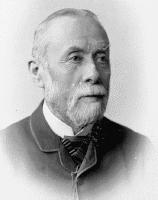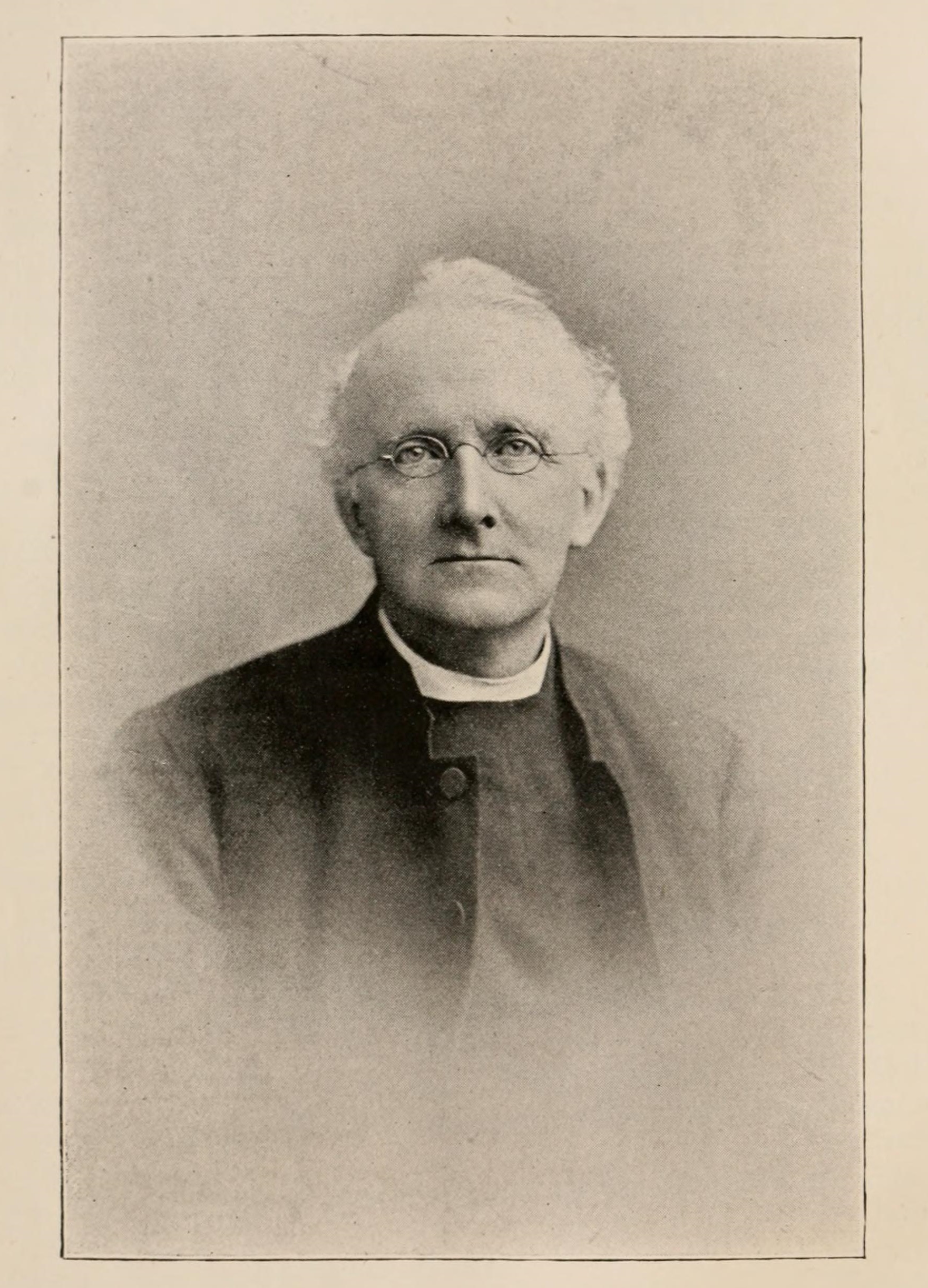|
Stephen Hislop
Stephen Hislop (8 September 1817, Duns, Scotland – 4 September 1863, Takalghat) was a Scottish missionary who worked with the Free Church in India, an educationist and a keen geologist. Hislop College, Nagpur is named after him, as is the green mineral Hislopite. Among his geological discoveries is the fossil reptile, '' Brachyops laticeps'' which he found in his geological explorations of the Nagpur region. Early life Hislop was born in Duns, Berwickshire on 8 September 1817, the youngest son of Stephen Hislop, a local builder, and his wife, Margaret Thomson. As a boy, he, like his older brother Robert, collected insects in the country around Duns, and rocks such as copper ore from old mine workings. Hislop was educated at Thomas Sherriff's school in Duns. He matriculated from the University of Glasgow in 1838 and completed his MA degree at the University of Edinburgh. He then studied divinity at New College, Edinburgh 1843/44 studying to be a minister of the Free Church of ... [...More Info...] [...Related Items...] OR: [Wikipedia] [Google] [Baidu] |
Stephen Hislop
Stephen Hislop (8 September 1817, Duns, Scotland – 4 September 1863, Takalghat) was a Scottish missionary who worked with the Free Church in India, an educationist and a keen geologist. Hislop College, Nagpur is named after him, as is the green mineral Hislopite. Among his geological discoveries is the fossil reptile, '' Brachyops laticeps'' which he found in his geological explorations of the Nagpur region. Early life Hislop was born in Duns, Berwickshire on 8 September 1817, the youngest son of Stephen Hislop, a local builder, and his wife, Margaret Thomson. As a boy, he, like his older brother Robert, collected insects in the country around Duns, and rocks such as copper ore from old mine workings. Hislop was educated at Thomas Sherriff's school in Duns. He matriculated from the University of Glasgow in 1838 and completed his MA degree at the University of Edinburgh. He then studied divinity at New College, Edinburgh 1843/44 studying to be a minister of the Free Church of ... [...More Info...] [...Related Items...] OR: [Wikipedia] [Google] [Baidu] |
Duns, Scottish Borders
Duns is a town in the Scottish Borders, Scotland. It was the county town of the Shires of Scotland, historic county of Berwickshire. History Early history Duns Law, the original site of the town of Duns, has the remains of an Iron Age hillfort at its summit. Similar structures nearby, such as the structure at Edin's Hall Broch, suggest the area's domestic and defensive use at a very early stage. Middle ages The first written mention of Duns is prior to 1179, when a 'Hugo de Duns' witnessed a charter of Roger d'Eu, of a grant of the benefice of the church of Gavinton, Berwickshire, Langton to Kelso Abbey. The town is further mentioned when a 'Robert of Douns' signed the Ragman Roll in 1296. The early settlement was sited on the slopes of Duns Law, close to the original Duns Castle built in 1320 by the Thomas Randolph, 1st Earl of Moray, Earl of Moray, nephew of Robert the Bruce. The town was frequently attacked by the English in border raids and as they headed north to the Loth ... [...More Info...] [...Related Items...] OR: [Wikipedia] [Google] [Baidu] |
Marathi Language
Marathi (; ''Marāṭhī'', ) is an Indo-Aryan languages, Indo-Aryan language predominantly spoken by Marathi people in the Indian state of Maharashtra. It is the official language of Maharashtra, and additional official language in the state of Goa. It is one of the 22 scheduled languages of India, with 83 million speakers as of 2011. Marathi ranks 11th in the List of languages by number of native speakers, list of languages with most native speakers in the world. Marathi has the List of languages by number of native speakers in India, third largest number of native speakers in India, after Hindi Language, Hindi and Bengali language, Bengali. The language has some of the oldest literature of all modern Indian languages. The major dialects of Marathi are Standard Marathi and the Varhadi dialect. Marathi distinguishes Clusivity, inclusive and exclusive forms of 'we' and possesses a three-way Grammatical gender, gender system, that features the neuter in addition to the masculine ... [...More Info...] [...Related Items...] OR: [Wikipedia] [Google] [Baidu] |
Alexander Hislop
Alexander Hislop (1807 – 13 March 1865) was a Free Church of Scotland minister known for his criticisms of the Roman Catholic Church. He was the son of Stephen Hislop (died 1837), a mason by occupation and an elder of the Relief Church. Alexander's brother was also named Stephen Hislop (lived 1817–1863) and became well known in his time as a missionary to India and a naturalist. Alexander was born and raised in Duns, Berwickshire. He was for a time parish schoolmaster of Wick, Caithness. In 1831 he married Jane Pearson. He was for a time editor of the ''Scottish Guardian'' newspaper. As a probationer he joined the Free Church of Scotland at the Disruption of 1843. He was ordained in 1844 at the East Free Church, Arbroath, where he became senior minister in 1864. He died of a paralytic stroke in Arbroath the next year after being ill for about two years. He wrote several books, his most famous being '' The Two Babylons: Papal Worship Proved to be the Worship of Nimro ... [...More Info...] [...Related Items...] OR: [Wikipedia] [Google] [Baidu] |
Gondi People
The Gondi (Gōndi) or Gond or Koitur are a Dravidian ethno-linguistic group. They are one of the largest tribal groups in India. They are spread over the states of Madhya Pradesh, Maharashtra, Chhattisgarh, Uttar Pradesh, Telangana, Andhra Pradesh, Bihar and Odisha. They are listed as a Scheduled Tribe for the purpose of India's system of reservation. The Gond have formed many kingdoms of historical significance. A Dravidian language, Gondi is claimed to be related to the Telugu. The 2011 Census of India recorded about 2.98 million Gondi-speakers. They are concentrated in southeastern Madhya Pradesh, eastern Maharashtra, southern Chhattisgarh and northern Telangana. Many Gonds, however, speak later regionally-dominant languages like Hindi, Marathi, Odia and Telugu. According to the 1971 census, their population was 5.01 million. By the 1991 census, this had increased to 9.3 million and by the 2001 census the figure was nearly 11 million. For the past few decades, they ha ... [...More Info...] [...Related Items...] OR: [Wikipedia] [Google] [Baidu] |
Indian Mutiny
The Indian Rebellion of 1857 was a major uprising in India in 1857–58 against the rule of the British East India Company, which functioned as a sovereign power on behalf of the British Crown. The rebellion began on 10 May 1857 in the form of a mutiny of sepoys of the Company's army in the garrison town of Meerut, northeast of Delhi. It then erupted into other mutinies and civilian rebellions chiefly in the upper Gangetic plain and central India, though incidents of revolt also occurred farther north and east. The rebellion posed a considerable threat to British power in that region, and was contained only with the rebels' defeat in Gwalior on 20 June 1858., , and On 1 November 1858, the British granted amnesty to all rebels not involved in murder, though they did not declare the hostilities to have formally ended until 8 July 1859. Its name is contested, and it is variously described as the Sepoy Mutiny, the Indian Mutiny, the Great Rebellion, the Revolt of 1857, ... [...More Info...] [...Related Items...] OR: [Wikipedia] [Google] [Baidu] |
Samuel Haughton
Samuel Haughton (21 December 1821 – 31 October 1897) was an Irish clergyman, medical doctor, and scientific writer. Biography The scientist Samuel Haughton was born in Carlow, the son of another Samuel Haughton (1786-1874) and grandson (by his second wife Jane Boake) of the three-times-married Samuel Pearson Haughton (1748-1828), a Quaker. Samuel Pearson Haughton was also father, by his third wife Mary Pim, of James "Vegetable" Haughton (1795–1873), a Unitarian, an active philanthropist, a strong supporter of Father Theobald Mathew, a vegetarian, and an anti-slavery worker and writer. The scientist Samuel Haughton had a distinguished career in Trinity College, Dublin and in 1844 he was elected a fellow. Working on mathematical models under James MacCullagh, he was awarded in 1848 the Cunningham Medal by the Royal Irish Academy. In 1847 he had his ordination to the priesthood but he was not someone who preached. He was appointed as professor of geology in Trinity College ... [...More Info...] [...Related Items...] OR: [Wikipedia] [Google] [Baidu] |
Richard Owen
Sir Richard Owen (20 July 1804 – 18 December 1892) was an English biologist, comparative anatomist and paleontologist. Owen is generally considered to have been an outstanding naturalist with a remarkable gift for interpreting fossils. Owen produced a vast array of scientific work, but is probably best remembered today for coining the word '' Dinosauria'' (meaning "Terrible Reptile" or "Fearfully Great Reptile"). An outspoken critic of Charles Darwin's theory of evolution by natural selection, Owen agreed with Darwin that evolution occurred, but thought it was more complex than outlined in Darwin's ''On the Origin of Species''. Owen's approach to evolution can be considered to have anticipated the issues that have gained greater attention with the recent emergence of evolutionary developmental biology. Owen was the first president of the Microscopical Society of London in 1839 and edited many issues of its journal – then known as ''The Microscopic Journal''. Owen also c ... [...More Info...] [...Related Items...] OR: [Wikipedia] [Google] [Baidu] |
Labyrinthodont
"Labyrinthodontia" (Greek, 'maze-toothed') is an informal grouping of extinct predatory amphibians which were major components of ecosystems in the late Paleozoic and early Mesozoic eras (about 390 to 150 million years ago). Traditionally considered a subclass of the class Amphibia, modern classification systems recognize that labyrinthodonts are not a formal natural group (clade) exclusive of other tetrapods. Instead, they consistute an evolutionary grade (a paraphyletic group), ancestral to living tetrapods such as Lissamphibia, lissamphibians (modern amphibians) and Amniote, amniotes (Reptile, reptiles, Mammal, mammals, and kin). "Labyrinthodont"-grade vertebrates evolved from Sarcopterygii, lobe-finned fishes in the Devonian, though a formal boundary between fish and amphibian is difficult to define at this point in time. "Labyrinthodont" generally refers to extinct four-limbed tetrapods with a large body size and a crocodile-like lifestyle. The name describes the pattern o ... [...More Info...] [...Related Items...] OR: [Wikipedia] [Google] [Baidu] |
Geological Society Of London
The Geological Society of London, known commonly as the Geological Society, is a learned society based in the United Kingdom. It is the oldest national geological society in the world and the largest in Europe with more than 12,000 Fellows. Fellows are entitled to the postnominal FGS (Fellow of the Geological Society), over 2,000 of whom are Chartered Geologists (CGeol). The Society is a Registered Charity, No. 210161. It is also a member of the Science Council, and is licensed to award Chartered Scientist to qualifying members. The mission of the society is: "Making geologists acquainted with each other, stimulating their zeal, inducing them to adopt one nomenclature, facilitating the communication of new facts and ascertaining what is known in their science and what remains to be discovered". History The Society was founded on 13 November 1807 at the Freemasons' Tavern, Great Queen Street, in the Covent Garden district of London. It was partly the outcome of a previous cl ... [...More Info...] [...Related Items...] OR: [Wikipedia] [Google] [Baidu] |




.jpg)



